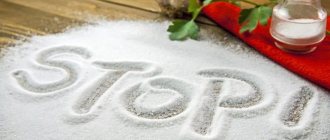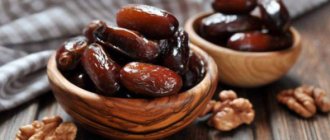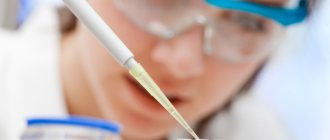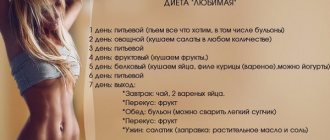What is the essence of a protein diet for weight loss?
By following the simplest protein diet, you can feel cheerful and active throughout it.
This is a significant advantage of this weight loss technique. But it can last no longer than 14 days, optimally 1 week. The fact is that a protein diet creates an energy deficit in the body by saturating it with high-protein foods and limiting the intake of carbohydrate foods. This causes stress in the body.
With a lack of carbohydrates, hidden glycogen reserves in fat deposits and muscle mass begin to be extracted.
Moreover, weight loss is first ensured by a significant loss of fluid, and a little later the muscle-fat mass begins to give up its energy reserves. The result of following the protein weight loss method:
- Lose weight by about 5 kg per week;
- absence of a constant gnawing feeling of hunger;
- maintaining weight loss results for a long time.
But despite these advantages of this diet, it cannot be called varied; the downside is that such a diet puts excessive stress on the kidneys and gastrointestinal tract and can lead to deterioration of health; pregnant women are prohibited from using it.
Therefore, the menu of a protein weight loss program includes not only foods with a predominant protein content, but also many other essential nutrients, this greatly facilitates compliance with the dietary regime and reduces the load on the kidneys.
results
With a protein menu for 2 weeks as part of this diet, you can lose weight in different ways. Results will depend on proper nutrition, lifestyle, exercise, positive attitude and existing diseases. If you never leave the race during these 14 days, following all the recommendations of nutritionists, the treasured figure on the scale may be 10 kg less, which is an excellent indicator. The main thing is to maintain it and not gain weight again, which likes to increase very quickly after leaving the hunger strike.
The presented protein diet menu options for 2 weeks allow you to assess your own strengths in advance. Look through it carefully and honestly answer yourself the question: do you have the fortitude to give up sweet and salty foods for such an impressive period of time? Perhaps you should first try yourself on a 7-day fast.
We also recommend reading: “Protein diet for 10 days.”
Protein diet: list of allowed foods and recommendations
During the protein diet, the following are allowed:
- any meat - pork, beef, poultry with minimal fat content;
- seafood, eggs, low-fat cottage cheese;
- raw vegetables: cabbage, cucumbers, herbs, tomatoes;
- Lemon juice or olive oil is used as a dressing;
- Oatmeal and buckwheat are allowed 2 times a week.
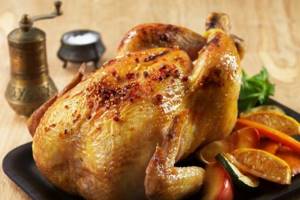
Excluded:
- sweets - here are all confectionery products (cakes, cookies), sugar and sweet fruits;
- bakery products, pasta, foods fried in fat;
- grains, potatoes, butter.
When following a protein diet, you must follow the following recommendations:
- you need to eat 5-6 times a day, the last time no later than 2 hours before bedtime;
- drink at least 1.5 liters of mineral water without gas or clean water daily;
- any alcohol is prohibited;
- If desired, it is permissible to eat a couple of citrus or unsweetened apples for a snack.
What kind of diet is this?
The protein diet is becoming more and more popular, many have already appreciated it, especially those who cannot live without meat. It involves the predominance of protein foods and limiting the consumption of carbohydrates. According to many scientists and nutritionists, this way of eating allows the body to begin to use up its own fat reserves, and this contributes to weight loss.
The body takes energy from carbohydrates, and if they do not have time to be used up, they are stored “in reserve”, and this is how fat deposits are formed, localized on the stomach, hips and other problem areas. But if the intake of carbohydrates is limited, then those that are already available will begin to be consumed. And proteins are a kind of building material used to form muscle and other tissues.
Protein diet for a week: menu options
Option 1 protein diet for 7 days
The first day:
- Breakfast: 150 grams of beef with one whole grain bread, a cup of tea or coffee;
- Snack: 1 apple;
- For lunch: boiled chicken breast (150 grams) with vegetable salad (200 grams);
- Afternoon snack: 1 glass of low-fat yogurt or kefir;
- For dinner: boiled sea fish (200 grams) with vegetable salad dressed with lemon juice.
Second day:
- Breakfast: 150 grams of low-fat cottage cheese, tea, coffee;
- Snack: 1 any citrus fruit;
- For lunch: beef stewed with vegetables (150 grams);
- Afternoon snack: 1 cup of low-fat kefir with diet bread;
- For dinner: 200 grams of boiled lean fish with fresh vegetables.
Day three:
- Breakfast: boiled chicken fillet (200 grams), tea or coffee;
- Snack: 1 apple;
- For lunch: 200 grams of boiled beans with a portion of vegetable salad;
- Afternoon snack: 200 grams of low-fat yogurt with dietary cookies;
- For dinner: 150 grams of boiled beef with 150 grams of cabbage salad, seasoned with 1 tbsp. l. olive oil.
Day four:
- Breakfast: 1 glass of low-fat kefir with dietary cookies;
- Snack: 1 unsweetened fruit;
- For lunch: 200 grams of boiled chicken breast, 1 glass of apple juice;
- Afternoon snack: 1-2 boiled eggs;
- For dinner: 200 grams of boiled fish, 150 grams of fresh vegetables.
Day five:
- Breakfast: 150 grams of boiled turkey, 1 apple, tea or coffee;
- Snack: 1 glass of apple juice, 1 diet cookie;
- For lunch: boiled fish (200 grams) with a piece of whole grain bread;
- Afternoon snack: 1 glass of low-fat kefir;
- For dinner: 150 grams of boiled beef with vegetable salad.
Day six:
- Breakfast: 150 grams of low-fat cottage cheese and tea;
- Snack: 1 grapefruit;
- For lunch: beans stewed with vegetables;
- Afternoon snack: 1 glass of kefir;
- For dinner: boiled sea fish (200 grams) with fresh vegetable salad.
Day seven:
- Breakfast: 1 glass of skim milk, 1 diet cookie;
- Snack: 1 unsweetened apple;
- For lunch: vegetable soup with champignons;
- Afternoon snack: 50 grams of low-fat cottage cheese;
- For dinner: boiled beef (150 grams) with fresh salad.
Option 2 of the seven-day protein diet
Day 1. Distribute throughout the day 200 grams of boiled chicken breast, 1 fresh cucumber and tomato, canned tuna without oil, grapefruit and 1 piece of whole grain bread.
Day 2. For the whole day, 200 grams of fried veal, the same amount of fresh cucumber, tomato, bread, fruit: apple or pear.
Day 3. Hard low-fat cheese (50 grams), boiled vegetables (200 grams), 2 cucumbers and tomatoes, bread, orange.
Day 4. 200 grams of boiled turkey fillet, the same amount of fresh tomatoes and cucumber, bread, pear, grapefruit.
Day 5. 2 eggs, 3 tomatoes, salad with vegetables, orange.
Day 6. Boiled turkey breast (200 grams), canned tuna, boiled vegetables, two cucumbers and tomatoes, bread, apple.
Day 7. 200 grams of low-fat cottage cheese, cucumbers, tomatoes, 2 cups of kefir, grapefruit.

Grapefruit not only contains a lot of vitamins, but also helps burn calories.
For whom is the diet contraindicated?
A protein diet has contraindications, these include periods of lactation and pregnancy, as well as chronic diseases of the gastrointestinal tract, kidneys and liver, such as ulcers or gastritis, liver or kidney failure, kidney stones and others.
In addition, the diet in question is not suitable for older people and teenagers (the former have a slower metabolism, while the latter experience an increased need for minerals, microelements and vitamins). In any case, you should consult your doctor before starting the diet period.
Protein diet menu for 14 days
A two-week weight loss program gives good results on high-protein foods. There is an effective menu option that specifies 3 meals, but in practice it is advisable to divide the amount of food into 5-6 meals.
- Breakfast: coffee. Lunch: tomato juice, salad with cabbage and vegetable oil. Dinner: boiled or fried fish (200 grams).
- Breakfast: crackers with coffee. Lunch: boiled fish (200 grams), vegetable salad with cabbage. Dinner: boiled beef with kefir.
- Breakfast: coffee and crackers. Lunch: stewed zucchini, apple. Dinner: boiled beef (200 grams), 2 boiled eggs, cabbage salad.
- Breakfast: coffee. Lunch: 1 boiled egg, fresh carrot salad with olive oil (1 tsp), a piece of hard cheese. Dinner: kefir.
- Breakfast: carrot salad dressed with lemon juice. Lunch: boiled fish fillet (200 grams), 1 glass of tomato juice. Dinner: a glass of kefir.
- Breakfast: tea. Lunch: boiled chicken breast, salad with cabbage and carrots. Dinner: 2 boiled eggs, grapefruit.
- Breakfast: coffee. Lunch: boiled beef (200 grams) and grapefruit. Dinner: 150 grams of low-fat cottage cheese.
- Breakfast: tea. Lunch: boiled turkey fillet, 1 apple. Dinner: a glass of kefir.
- Like the sixth day.
- Like the fifth day.
- Breakfast: coffee. Lunch: 1 boiled egg, boiled carrots, a piece of hard cheese. Dinner: a glass of kefir.
- Like the third day.
- Breakfast: coffee and crackers. Lunch: boiled fish (200 grams) with cabbage salad. Dinner: boiled beef (150 grams) and a glass of kefir.
- Breakfast: coffee. Lunch: 2 boiled eggs, cabbage salad and 1 tomato. Dinner: boiled fish 200 grams.
Protein in foods
- When on a protein diet, it is recommended to prepare the simplest possible dishes.
- Meat, fish and poultry can be boiled, stewed, baked on the grill or in the oven with a minimum amount of vegetable oil, and also steamed.
- You should not get carried away with spicy seasonings and additives, or add too much salt or pepper to your dishes. For piquancy, you can add just a little mustard.
- Store-bought sausages are not suitable for a protein diet.
- Fermented milk products with low fat content - cottage cheese, hard cheeses - fit perfectly into a protein diet.
- For dinner, you can drink protein shakes, which are sold in sports stores as sports nutrition, especially during heavy physical activity.
Dukan diet menu
The Dukan diet according to the menu is divided into various stages: attack, cruise, protein-vegetable, consolidation, stabilization. The very first stage of the attack is the most critical, here is its approximate menu:
- For breakfast: 2 egg white omelette with low-fat milk and some herbs.
- Snack: one and a half tablespoons of bran oatmeal.
- For lunch: 200 grams of boiled veal.
- Snack: boil 200 grams of shrimp or other seafood.
- For dinner: 200 grams of boiled veal or lamb.
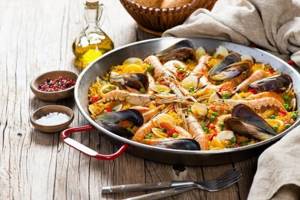
Boil seafood in slightly salted water.
How to get out of a diet
You need to exit any diet gradually so that the lost kilograms do not return after a short time. First of all, you should not dramatically increase portion sizes. Previously excluded foods can be added little by little, but flour and sweets should be the last thing in the daily diet. It is better to increase the amount of fruits and vegetables, as well as cereals. You need to continue to eat lean meat, fish, and dairy products. Alcohol is allowed no earlier than 5 days after switching to a regular diet.
The main advantage of the protein diet is that it allows you to lose 3–5 kilograms in a matter of days without fasting, but it should be used very carefully and not for long.
Recipes for a protein diet
Chicken fillet in kefir
You will need:
- 100 grams of chicken fillet;
- 50 ml each of kefir and water;
- salt, pepper, herbs to taste.
Cut the chicken fillet into pieces and mix with salt and seasonings. Pour a mixture of kefir and water over the chicken. Refrigerate for at least 3 hours. Cook the fillet pieces in a hot frying pan without oil for 5 minutes on each side.
Oven baked fish
You will need:
- 200 grams of fish fillet (pollock, hake, cod, tilapia, pangasius, trout);
- juice of 1 lemon;
- seasonings to taste.
You can also bake it in a special sleeve.
Pour lemon juice over the fish fillet, sprinkle with seasonings and dried herbs. Place the fish on foil, wrap and bake in the oven until cooked (20-30 minutes).
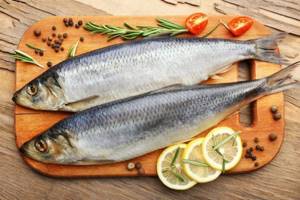
To prevent the fillet from burning or sticking, add a little water to the baking sheet where it is baked.
Spinach cream soup
You will need:
- 1 skinless turkey breast or drumstick;
- 1 package spinach (fresh or frozen);
- 2 cloves of garlic;
- salt, pepper, any herbs as desired;
- 1/3 cup skim milk.
Boil the turkey, remove it from the broth and let it cool. Chop the spinach and simmer in the broth for about 5 minutes. Separate the turkey meat from the bones, chop it finely and put it back into the broth. Cook for another 2 minutes. Cool the soup a little, then puree everything using a blender, gradually adding milk to the mixture, adding spices and chopped herbs. It is better to serve the finished puree soup immediately; when heated, it may lose its puree-like consistency.
Beef baked with eggplant
For 4 servings you will need:
- 0.5 l of water;
- 500 g lean beef;
- 300 g eggplant;
- 400 g peeled tomatoes;
- finely chopped parsley, a clove of garlic.
Cut the eggplants into rings and place in salted water for 15 minutes. Chop the tomatoes, place in a saucepan, sprinkle with parsley and crushed garlic. Bring water to a boil and cook the eggplants in it for half an hour over medium heat. Then add to the tomatoes and mix everything. Cut the meat into thin slices.
Place half of the vegetables in a heat-resistant baking dish, place the meat on them, and cover with the rest of the vegetables.
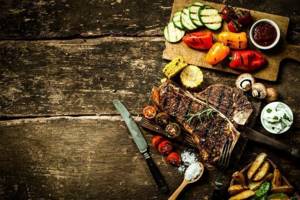
Bake in the oven for 15 minutes.
Flaws
- Imbalance . Any change in nutrition is positive and negative. The body may not accept the new diet, and health problems will arise. Only a gastroenterologist can accurately say about the future result. Before any dietary course, you should consult a doctor, especially if you have digestive diseases.
- Lack of substances . After a diet, the concentration of nutrients in the body is noticeably reduced. Many vitamins (A, D, E, K) are not absorbed if there is a lack of fatty acids. The body does not receive the necessary microelements. Vitamin complexes will not help replenish the supply, since the substances are not processed. A reduction in fiber content leads to disturbances in the gastrointestinal tract.
- Deterioration of health . This manifests itself in the following: changes in complexion, sleep disturbance, insomnia, dry skin, brittle nail plate, dull hair, fatigue.
- Kidneys . When protein intake increases, the kidneys begin to work harder, which puts stress on the organs. The body loses a lot of fluid. To solve the problem, it is recommended to drink mineral water.
- Blood . If restrictions are observed, blood clotting increases, which increases the risk of blood clots. The diet is prohibited for people with diseases of the cardiovascular system.
- Contraindications . Diseases: pancreatitis, colitis, gout, dysbacteriosis. The diet is contraindicated for older people, pregnant and lactating women, children and adolescents.
What's on the menu
Protein can be of plant or animal origin.
Important!!! To fully nourish the body, it is advisable to combine both types of protein (50/50).
Sources of animal protein:
Any meat. A 100-gram piece of chicken breast contains approximately 25 grams of protein, beef - 28 grams, and turkey - about 30 grams. Egg Cottage cheese and dairy products, Seafood Fish
Vegetable protein sources:
Nuts (almonds, pistachios, cashews, peanuts) Cereals (buckwheat, pearl barley, oatmeal, millet) Legumes (beans, lentils, chickpeas) Mushrooms
In order to speed up your metabolism, you need to give 50 to 75% of your daily diet to proteins. This is approximately 1 gram of protein per 1 kg of weight.
As a super snack, protein mixtures or bars are great for replenishing protein and satisfying hunger.

